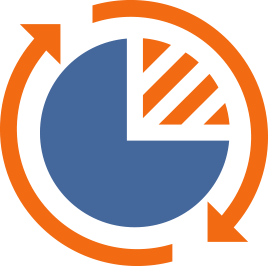DATA & ANALYTICS
INSIGHT & CLARITY TO GUIDE THE RIGHT ENGAGEMENT AT THE RIGHT TIME
Being crystal clear on what you want from the data is critical. Many understand the initial business question and data needed to reach the goal, but fail to tweak the business questions to better address the problem along the way.
Data analysis should be considered a journey of discovery versus a black-and-white, requirements-driven process. It often takes turning the data, like a kaleidoscope, before the right data pattern takes form.
Combining data and business strategy at the “big data” level is complex and nuanced, requiring the combination of business knowledge, open-mindedness, and broad experience from many industries. Often this right-brain, left-brain glue must come from outside of your organization.
BASE YOUR BUSINESS QUESTION ON YOUR GOALS AND DESIRED OUTCOMES.
Be very clear on the problem you are trying to solve and the goal you are trying to achieve. State the problem broadly to allow for iteration. For example, are you trying to:
Drive a customer-first experience?
Expand into adjacent markets or products?
Reduce expenses?
Create efficiencies in your supply chain?
DETERMINE WHAT DATA HELP SOLVE THE BUSINESS QUESTION.
Avoid data retrofits to create the question
Fill data gaps wisely
RIGHT-BRAIN, LEFT-BRAIN APPROACH
Often objectivity and new perspectives must come from outside of your organization. Capto can help you:CRUNCH THE DATA, FAST.
Traditional ways to explore and deploy are too slow. Alternative models exist, such as Insights-as-a-Service where tapping into non-traditional third-party data can lead to market-differentiating insights. Capto can help you develop and deploy these models effectively.
USE THE FRESHEST CUSTOMER DATA & ITERATE FIERCELY.
Quick wins result from insights deployed at the point of customer engagement. Deploying next best actions to the right person at the right time with the right message delivers outsized results in retention and revenue growth.
CASE STUDIES







